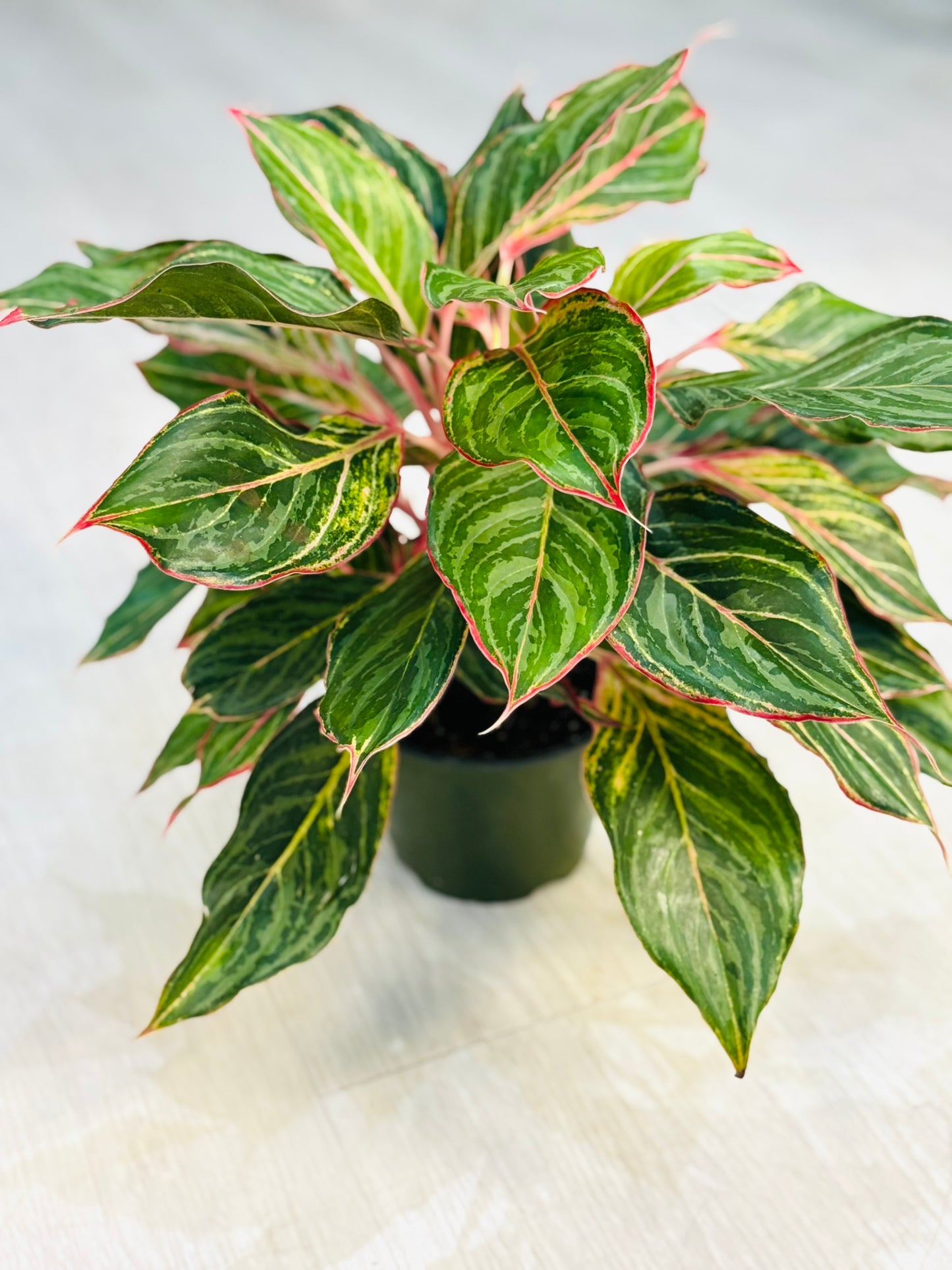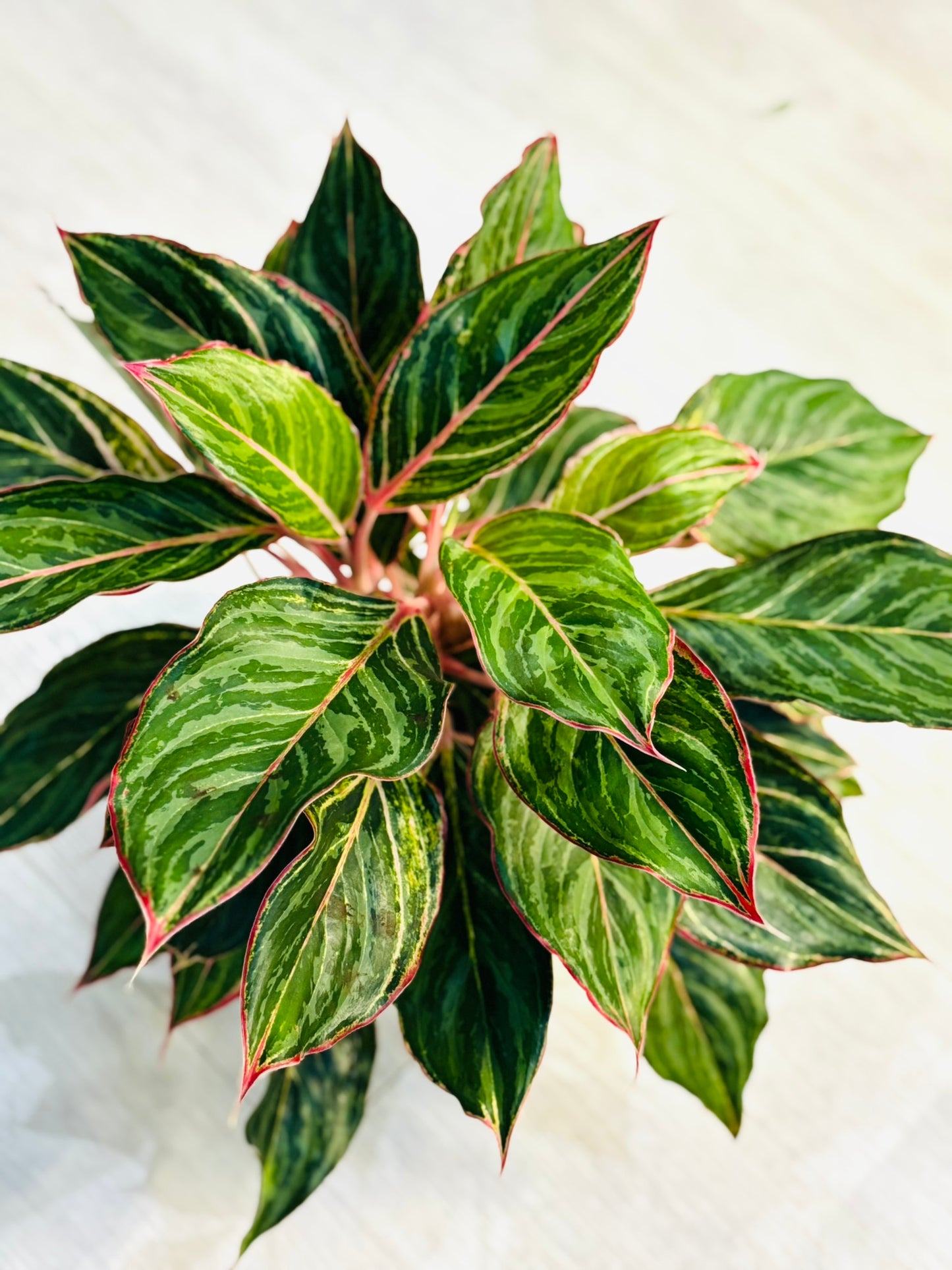SoCal Soul Plants & Gifts
Aglaonema Moonstone 6"
Aglaonema Moonstone 6"
Pickup available at SoCal Soul Store
Usually ready in 24 hours
Light Requirements
- Low to Medium Indirect Light: Aglaonema is highly adaptable to low-light conditions but will grow faster and maintain brighter foliage in medium to bright indirect light. It is perfect for shaded corners or offices with fluorescent lighting.
- Avoid Direct Sunlight: Direct sunlight can scorch the leaves and fade the variegation. Always keep it in indirect or filtered light.
Watering
- Moderate Watering: Water the plant when the top 1-2 inches of soil are dry. Aglaonema prefers slightly moist soil but is prone to root rot if overwatered. Ensure the soil dries out between waterings.
- Filtered or Distilled Water: Aglaonemas can be sensitive to chemicals in tap water, like chlorine and fluoride, so it’s best to use filtered or distilled water when possible.
- Humidity: While it tolerates average indoor humidity levels, 'Tigress' appreciates higher humidity. Mist the plant occasionally or place it near a humidity tray to keep its foliage vibrant.
Soil
- Well-Draining Soil: Use a well-draining potting mix, such as a blend of standard indoor plant soil with added perlite or sand for better aeration and drainage.
- Avoid Waterlogged Soil: Ensure the pot has drainage holes to allow excess water to escape, as standing water can quickly lead to root rot.
Temperature
- Warm Temperatures: Aglaonema prefers warm indoor temperatures between 65-80°F. It does not tolerate cold temperatures or drafts, so avoid exposing it to temperatures below 60°F.
- Stable Environment: Keep the plant away from air conditioning vents, cold drafts, and heaters, as it thrives best in stable, warm environments.
Fertilization
- Balanced Fertilizer: Fertilize the plant with a balanced liquid fertilizer, such as 10-10-10 or 20-20-20, every 4-6 weeks during the growing season (spring and summer). Cut back on fertilizing during the fall and winter when the plant’s growth slows.
- Dilute Fertilizer: Always dilute the fertilizer to half strength to avoid root burn or overfeeding.
Pruning
- Minimal Pruning: Prune the plant as needed to remove yellow, dead, or damaged leaves. This will help promote new growth and maintain the plant’s appearance.
- Encourage Bushiness: Trim leggy stems to encourage the plant to grow fuller and more compact.
Repotting
- Repot Every 1-2 Years: Repot every 1-2 years or when it becomes root-bound. Spring is the best time for repotting. Choose a pot that is slightly larger and has good drainage.
- Use Fresh Soil: When repotting, replace the old soil with fresh, well-draining potting mix to promote healthy root development.
Propagation
- Division: The easiest way to propagate Aglaonema is by dividing the plant. During repotting, carefully separate the root ball into smaller sections and plant them individually.
- Stem Cuttings: You can also propagate the plant through stem cuttings. Cut a healthy stem and root it in water or moist soil until roots develop, then transplant it into a pot.
Common Issues
- Yellowing Leaves: This can be caused by overwatering or poor drainage. Check the soil moisture and drainage, and adjust watering accordingly.
- Brown Leaf Tips: This can result from low humidity, underwatering, or exposure to chemicals in tap water. Increase humidity and use distilled or filtered water if necessary.
- Pests: Aglaonema is generally resistant to pests, but it can sometimes attract spider mites, mealybugs, or aphids. Inspect the plant regularly and treat infestations with insecticidal soap or neem oil.
Toxicity
- Toxic to Pets and Humans: is toxic if ingested, so keep it out of reach of pets and children
Care Instructions
Care Instructions
Delivery only available in IL & MO
Delivery only available in IL & MO
Currently, shipping is only available to Illinois and Missouri addresses.
In-Store Pick Up
In-Store Pick Up
Free in-store pick-up is available during store hours. Orders are ready to go within 24-48 hours after your order is placed.
Additional Info
Additional Info
Each plant is unique; size, coloring, and shape fluctuate so your plant may be slightly different than the one pictured. However, you'll always receive a happy healthy plant hand-picked, and I won't give customers anything I wouldn't take home myself!






